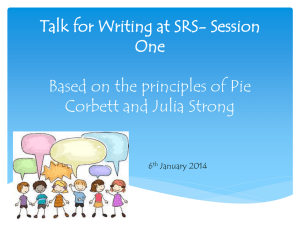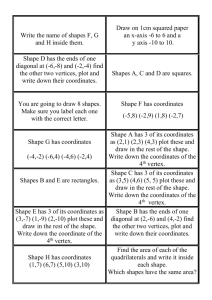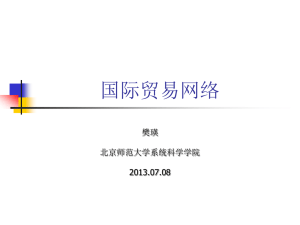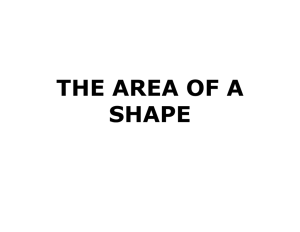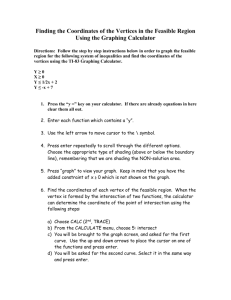Year 2 Teaching Sequence xxx
advertisement
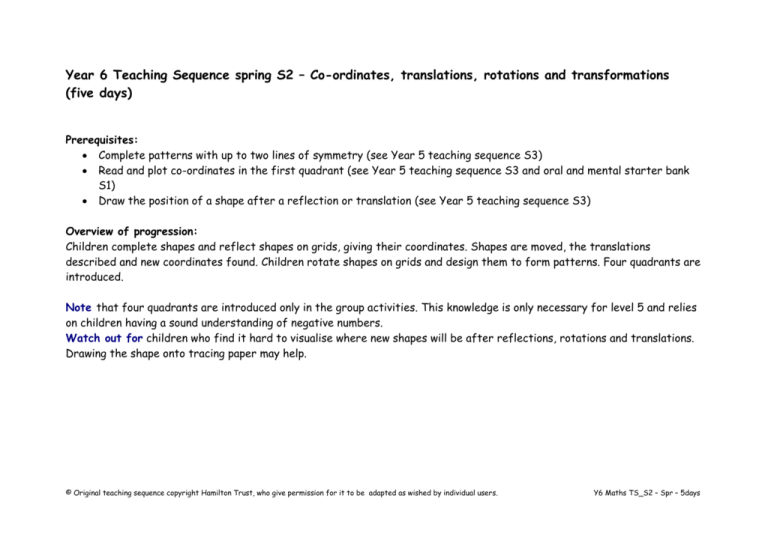
Year 6 Teaching Sequence spring S2 – Co-ordinates, translations, rotations and transformations (five days) Prerequisites: Complete patterns with up to two lines of symmetry (see Year 5 teaching sequence S3) Read and plot co-ordinates in the first quadrant (see Year 5 teaching sequence S3 and oral and mental starter bank S1) Draw the position of a shape after a reflection or translation (see Year 5 teaching sequence S3) Overview of progression: Children complete shapes and reflect shapes on grids, giving their coordinates. Shapes are moved, the translations described and new coordinates found. Children rotate shapes on grids and design them to form patterns. Four quadrants are introduced. Note that four quadrants are introduced only in the group activities. This knowledge is only necessary for level 5 and relies on children having a sound understanding of negative numbers. Watch out for children who find it hard to visualise where new shapes will be after reflections, rotations and translations. Drawing the shape onto tracing paper may help. © Original teaching sequence copyright Hamilton Trust, who give permission for it to be adapted as wished by individual users. Y6 Maths TS_S2 – Spr – 5days Objectives: Read and plot co-ordinates in the first quadrant Use co-ordinates in the first quadrant to draw, locate and complete shapes that meet given properties Visualise and draw on grids of different types where a shape will be after reflection, after translation, or after rotation through 90 or 180 degrees about its centre or about one of its vertices Whole class Group activities Paired/indiv practice Draw the following diagram on the board (preferably using a IWB graph paper background): Group of 4-5 children Draw the following diagram on the flipchart (not on graph paper): Chn work in pairs and each draw and label horizontal and vertical axes on cm2 paper such that each axis is as long as possible. The first child imagines a square on his/her graph paper and draws three points and the second child draws a fourth point such that the four points can be joined to form a square. They label the coordinates of each point. They swap roles, the second child drawing three points on his/her paper. Repeat, this time each drawing a rectangle. They then take it in turns to draw two points and draw a third to make at least three different triangles, and then five points and then a sixth to form a hexagon. Harder: Chn’s triangles and hexagons must also be symmetrical. y 7 6 A 5 4 B 3 2 1 0 1 2 3 4 5 6 7 8 9 x What are the coordinates for point A? And B? If necessary, remind children to go along the x-axis first before moving up. A and B are two corners or vertices of a square. Talk to your partner about where the other two points might be. Take feedback, marking on chn’s suggestions and joining them with straight lines. Now A and B are corners/vertices of a rectangle. Where might the other two vertices be? What if A and B are two vertices of a triangle? This is a picture of two squares. Talk to a partner about what the coordinates of C might be, Repeat with the diagrams below: Ask chn to work in pairs to sketch two axes, draw on a square and write the four coordinates on the back. They label two vertices on their diagram and ask their partner to work out the other two. They turn over the paper to see if they are in agreement. Easier: Chn label three vertices. Harder: Chn label only one vertex but tell their partner the length of one side. © Original teaching sequence copyright Hamilton Trust, who give permission for it to be adapted as wished by individual users. Resources cm2 paper Y6 Maths TS_S2 – Spr – 5days Sketch the following on graph paper: This is part of a symmetrical shape. Talk to your partner about where the other two vertices might be and write their coordinates on your whiteboards. What is the shape? What are the angles at each vertex? How do you know? Group of 4-5 children Draw horizontal and vertical axes in the centre of a piece of cm2 paper (or larger piece of paper with larger squares if you have it), labelled x and y, so that all four quadrants are visible. Draw a triangle in the first quadrant and ask chn to write coordinates by each vertex. The triangle is going to be reflected in the y axis. Where do you think the new triangle will be? Invite a child to come up and draw the reflected shape. We’re going to try and work out the coordinates of this new shape. Place numbers 0 to 5 on the x-axis. What whole number comes before zero? Label -1. What number do you think goes here? And here? Label the rest of the x axis. Repeat for the y-axis. Help chn to label the coordinates of the new shape. What do you notice about the coordinates of the new shape? Now we’re going to reflect this new shape in the x- © Original teaching sequence copyright Hamilton Trust, who give permission for it to be adapted as wished by individual users. Chn draw axes on cm2 paper as in session one. One child draws a simple shape (square, rectangle or triangle) on his/her paper, the second child draws a horizontal, vertical or diagonal mirror line. They both secretly write down the coordinates of the reflected shape, and then see if they are in agreement. When they are, they draw on the reflected shape labelling each vertex. They then swap roles and pieces of paper. Easier: After the first child has drawn the mirror line, chn use a mirror to help them to draw the new reflected shape and then identify the coordinates of each cm2 paper small mirrors Y6 Maths TS_S2 – Spr – 5days Draw the following shape on the board with a mirror line drawn. Ask chn to discuss in pairs the coordinates of the triangles reflected in the mirror line. Repeat with other simple shapes, reflected in vertical, horizontal and diagonal mirror lines. Draw the lower triangle as in the diagram below on the board, on using an IWB graph paper background: Label the coordinates of the lower triangle. The triangle is then moved to here. Draw on the triangle in its new position. How could we describe how it has been moved? Discuss how it has been moved up three squares and along two squares. Ask chn to record the coordinates for the new position and ask them what they notice and why they think this is. Draw out what has been added to the original pair of coordinates. axis. Ask a child to draw the new shape, and together find the coordinates. Now we’re going to reflect this shape in the y-axis. Draw and label the new shape. Now we’re going to reflect this new shape in x-axis. What do you think will happen? Chn work in pairs to draw their own axes (showing all four quadrants) and drawing a simple shape to reflect in both the x – and y-axes. Easier: Draw the shapes, but do not find the coordinates. vertex. Harder: Chn draw pentagons or hexagons. Group of 4-5 children Shuffle a set of cards from -10 to 10. Take two and say that they are the coordinates of a point. Draw horizontal and vertical axes from -10 to 10 and help chn to mark on the point. Rpt five more times, and then join the points to make a hexagon. What shape have we drawn? Give chn two minutes to write as many facts as they can about the drawn shape (e.g. it is symmetrical or not, it is irregular, the numbers of acute and obtuse angles, number of right angle etc). Chn repeat this in pairs. Chn draw axes on cm2 paper. They draw and cut out a 4cm by 2cm rectangle and place it on the graph paper so that it aligns to the squares on it. They write down the coordinates. They then move the rectangle to a new position, record the translation (e.g. up 2 squares, 3 squares along to the right) and its new coordinates. Each time, they draw the rectangle on the graph paper. © Original teaching sequence copyright Hamilton Trust, who give permission for it to be adapted as wished by individual users. Cards: -10 to 10 cm2 paper Y6 Maths TS_S2 – Spr – 5days Repeat moving the triangle up and across the same number of squares and ask chn to predict what the new coordinates will be. You might see patterns like this on wrapping paper or material, where one shape is moved a set distance and repeated to make a pattern. Repeat, this time moving a shape a number of squares up and a number of squares to the left (keeping it in the first quadrant). Ask chn to stand and face the front. Play ‘Simon says’ using instructions about turning clockwise and anticlockwise. Turn 90 degrees clockwise. Simon says turn 180 degrees anticlockwise. Turn back. Draw the following design on squared paper (or IWB background): Easier: Draw a four-sided shape in the first quadrant using cards 0 to 10. They move the rectangle the same way each time so as to create an aesthetic pattern. Harder: Chn carry out the task in pairs, one describing the translation whilst the other predicts the new coordinates. They then move the rectangle to check. Group of 4-5 children Cut out a right-angle triangle and draw round it on the flipchart. Rotate the triangle through 90 degrees around the 90 degree vertex, and draw round the shape again. Repeat twice more. Show chn how a protractor can be used to make sure that the angle between the horizontal side of the first triangle and the corresponding side of the new triangle is 90 degrees. Chn draw and cut out their own shapes and make their own rotating patterns. Chn colour in squares to form a pattern in a 4 by 4 grid of squares on cm2 paper, using three different colours. They outline the grid of 16 squares. They then rotate their design 90 degrees clockwise and draw it next to the original. Then repeat until they have several lines forming a pattern, e.g. © Original teaching sequence copyright Hamilton Trust, who give permission for it to be adapted as wished by individual users. Card Protractors cm2 paper Y6 Maths TS_S2 – Spr – 5days The first pattern has been rotated to form the second. Talk to your partner about how we could describe this rotation. Take feedback and draw out the pattern has been rotated anticlockwise through 90 degrees. Draw what the pattern would look like if it were rotated through another 90 degrees anticlockwise. Repeat. How else could we get from the first pattern to the last pattern? From the first pattern to the third pattern? Cut out a square from card, and attach it to a piece of paper with a paper clip as close to one corner as you can. Draw round the square on the paper. Rotate the square clockwise through 90 degrees, and draw round it again. Repeat until the square is back where it was to begin with. See diagram below. Draw this. The shape is going to be rotated 90 clockwise about point A, that is, the bottom vertex. Sketch how you think the new shape will look. Ask a child to come and draw the rotated shape on the board and ask the others to identify its coordinates. and so on Easier: Chn only use right-angled triangles or rectangles. Harder: Chn rotate the shape through 45 degrees each time, e.g. Easier: Chn use two colours. Harder: Chn use four colours. Group of 4-5 children Cut out an equilateral triangle and put a brass fastener thro’ its centre, attaching it to another piece of card. Draw round it. Mark one corner of the triangle. Ask chn to rotate triangle until it is on the original drawing. Repeat until it is back to is original position. We turned this three times, so it was in three different positions but looked the same as the original shape, we can say this shape had rotational symmetry order 3, because we can rotate it and it looks the same, and we can do this three times before it goes back to its original position. Give chn a set of shapes on card attached with brass fasteners through their centres: square, rectangle, regular pentagon, regular Chn draw simple triangles and quadrilaterals on cm2 paper (having drawn the x and y-axes first: these should be as long as possible so that chn can fit on as many shapes as possible). They choose and label a vertex and rotate the shape through 90 degrees either clockwise or anticlockwise. They label the coordinates of each shape. Chn should use tracing paper if they find it helpful. Easier: Chn rotate squares and rectangles. © Original teaching sequence copyright Hamilton Trust, who give permission for it to be adapted as wished by individual users. Card shapes as opposite with brass fasteners cm2 paper Tracing paper Y6 Maths TS_S2 – Spr – 5days hexagon and symmetrical but irregular hexagon and ask them to investigate rotational symmetry. Easier: Give chn a mix of regular, symmetrical and irregular and asymmetrical shapes to sort into those which have rotational symmetry and those which don’t. Harder: Chn include other polygons. Repeat for the following: © Original teaching sequence copyright Hamilton Trust, who give permission for it to be adapted as wished by individual users. Y6 Maths TS_S2 – Spr – 5days

